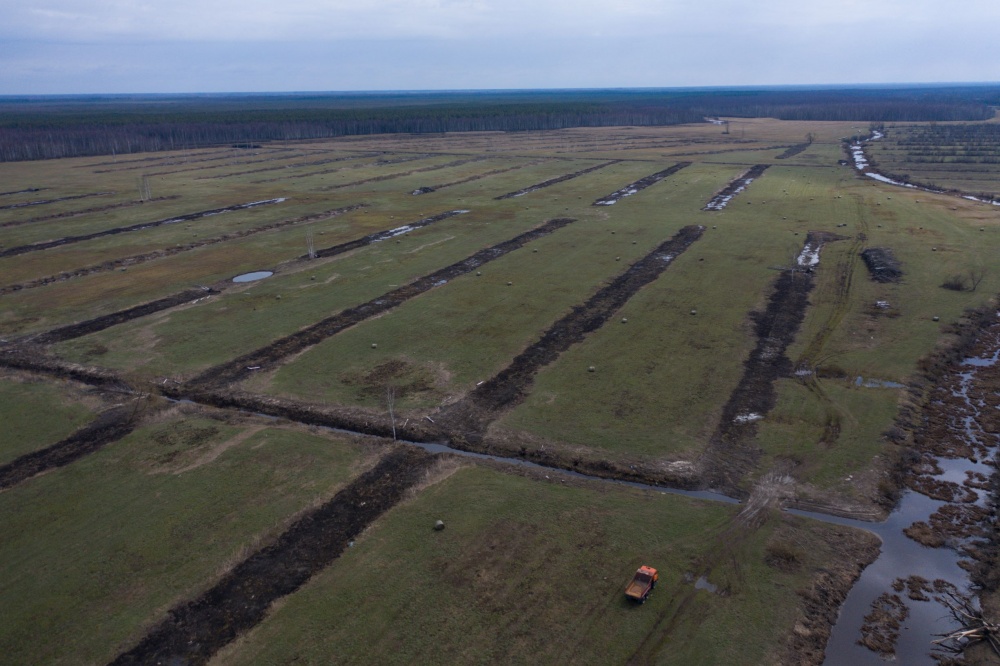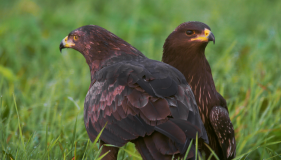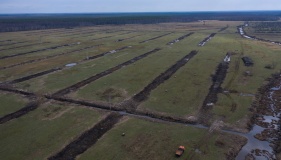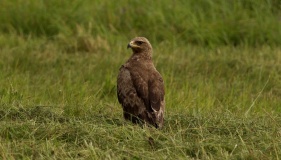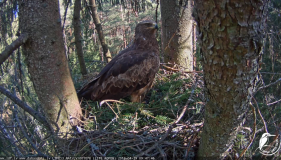Grivu Island is one of the restoration territories of the project ‘Arrangements for Lesser Spotted Eagle protection in Latvia’, where the project partner, farm ‘Tiravoti’ under the management of Ivars Silkans, is carrying out work that has already yielded tangible results. Grivu Island changes with each season.
Ivars Silkāns, owner of Tīravoti.
Grivu Island is a huge massif of meadows surrounded by bogs and forests in the northern part of the nature reserve ‘Lake Lubans Wetland’, its total open area is about 500 hectares. During the Soviet period, a large part of the meadows was drained to increase its productivity – drainage ditches were dug every 50–100 metres. During the last thirty years, ditches and some meadows have overgrown with trees and bushes. Therefore, the valuable meadow habitats of European Union importance that can be found in this area have not been managed for a long time and the diversity of nature has decreased. The land was difficult to manage, it was difficult to access, and although Ivars Silkans had already started to work to improve the territory, it was not possible to carry out the restoration only by the farm's own forces and resources.
Today, Grivu Island is completely different from the overgrown landscape at the beginning of the project – nature diversity and economic activity have returned to it. In order for this to happen, it was first necessary to restore the driveway, thus providing access to the territory, followed by the restoration of the natural flood water regime of Grivu Island – the filling up the drainage ditches. The work went on not without challenges – during the flood of 2019, the equipment was drowned in water and the operation had to be stopped until the summer of 2020, when the meadows dried. By November 2020, all the works planned in the project had been completed – 30 kilometres of drainage ditches had been filled up, 2 km of road had been restored, 10 artificial wetlands – small ponds – had been created, as well as 13 hectares of wooded meadows and 44 hectares of floodplain grasslands had been restored.
Wooded meadows and floodplain grasslands were restored in the winter of 2019 and 2020 – shrubs and trees were cut down. The progress will ensure that the restored areas are suitable for mowing and grazing, and will therefore be suitable feeding grounds for the lesser spotted eagle and nesting grounds for many other bird species, such as the northern lapwing, and possibly one of the rarest birds nesting in our grasslands, great snipe. Small wetlands are new spawning grounds for amphibians, thus feeding grounds for birds, as well as watering grounds for grazing livestock. Part of the floodplain grasslands were restored on the filled ditches, and these areas are now considered as agricultural land.
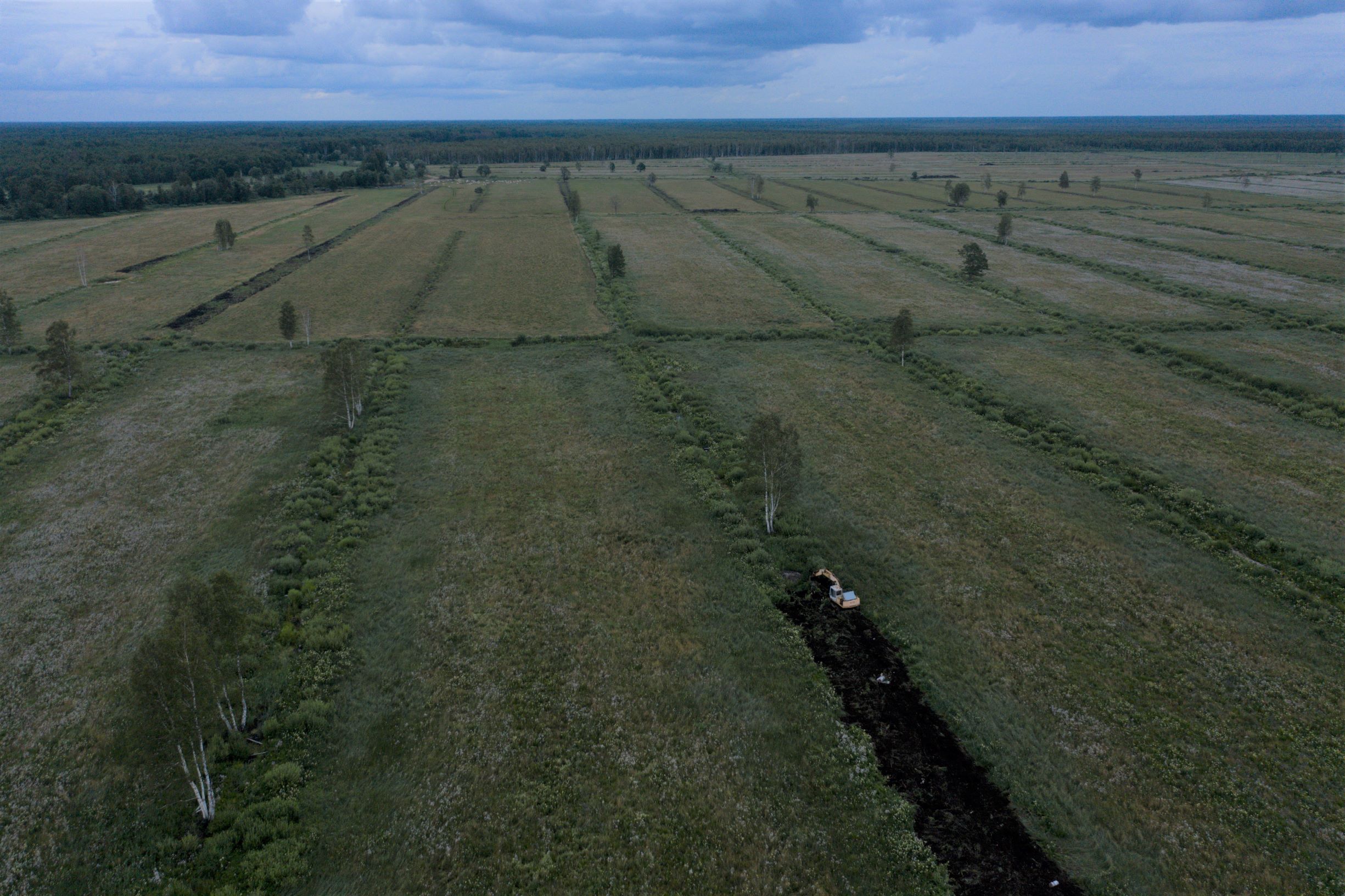
View of Grivu Island from a bird's eye. Ditch filling works are visible.
Now the herd of ‘Tiravoti’ cattle is grazing on Grivu Island – grazing helps to continue the restoration of natural diversity in the meadows. As Ivars Silkans, the owner of ‘Tiravoti’, tells us, ‘We have been engaged in the restoration of habitats before, but before the project it was practically impossible to reclaim and improve the territory of Grivu Island. Since the beginning of cooperation, economic activity has visibly improved here – we have become much more active. Now the roads have been rebuilt, the meadows have been restored, the pasture infrastructure has been created. We also have extended the herd, and we are very proud of it. The purchase of equipment, which is one of the benefits of the project, finally made it possible to carry out economic activities in a place that looked hopeless.’
Nature experts who carry out regular monitoring of the species in the territory, in turn, indicate that the restoration works are already showing the results. Within the framework of vegetation monitoring, since the beginning of the project, inventory of plant species has been carried out in several sample plots throughout the territory, where the water regime has been restored and grazing has taken place. Maija Medne, the project's grassland expert, concludes, ‘Management has yielded results reducing the proportion of expansive species and weeds, such as creeping thistle, common nettle and curled thistle, and the area is increasingly dominated by floodplain grasses: various sedges, meadowsweet, yellow loosestrife, tufted hair-grass, garden speedwell, rough meadow-grass, fen bedstraw. Indicator species of natural grasslands can be found in the grasslands of Grivu Island – goldilocks buttercup and northern bedstraw, as well as a specially protected species – Cnidium dubium (Schkuhr) Thell. The presence of the herd has contributed to the fact that the grass is lower – it provides better hunting conditions for the lesser spotted eagle and other predatory birds.’
Janis Kuze, the leader of the project ‘Ensuring the Protection of the Lesser Spotted Eagle in Latvia’, evaluates, ‘The centre of the project is the lesser spotted eagle and the provision of suitable feeding areas and habitats. The example of Grivu Island shows how, by carrying out nature restoration work aimed at one species, we implement a whole set of measures, in essence – restoring an ecosystem that benefits both nature diversity and economic activity. Now there are beautiful, naturally diverse meadows where you can successfully graze cattle and develop rural businesses.’
Video story about floodplain restoration on Grivu Island.


